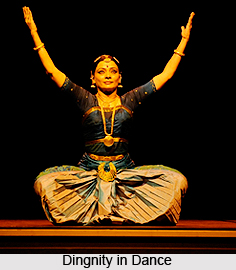 Shruti in Indian Music is the musical pitch. Basically it is a note from which all others are derived. This word is derived from the root "Shru" means to hear, and its core meaning is any sound that cab be distinctly heard by the ear.
Shruti in Indian Music is the musical pitch. Basically it is a note from which all others are derived. This word is derived from the root "Shru" means to hear, and its core meaning is any sound that cab be distinctly heard by the ear.
There are endless "Shrutis". Since the time of Bharata there has been twenty-two shrutis and they are: Tivra, Kumudwati, Manda, Chandobati, Dayabati, Ranjani, Raktika, Raudri, Krodhi, Bajrika, Prasarini, Priti, Manjari, Kshiti, Rakta, Sandi-pini, Alapini, Madanti, Rohini, Ramya, Ugra and Kshovini.
There are several sounds that fall falling within a raga in Carnatic music. The number that can be distinguished by aural perception is twenty-two. Shruti is determined by auditory perception. It is an expression in the mind of the listeners. Shruti is the smallest interval of pitch the ear can perceive.
According to Bharata shruti is the interval between two notes. The difference between them is visible. He devises jatis which are types of melodic structures which are divided into two gramas - shadja-grama and madhyama-grama. The notes which are separated by intervals are measured in terms of shrutis.
The shadja-grama is given by the following division: Sa of four shrutis, Ri of three shrutis, Ga of two shrutis, Ma of four shrutis, Pa of four shrutis, Da of three shrutis and Ni of two shrutis. Bharata also describes an experiment to obtain the correct physical configuration of shruti in shadja grama, Sarana Chatushtai.
The madhyama-grama is the same, but the panchama (Pa) has to be diminished by one shruti. That is, the panchama of madhyama-grama is lower than that of shadja-grama by one shruti according to Bharata. Shruti is only mentioned as a perceptual measure in the music of Bharata`s time.
Venkatamakhi does not specify a fixed interval for a swara in terms of shrutis. In his mela system shruti as a measure of interval is utilized properly. Currently the term shruti has several connotations and it is used by musicians in various contexts.
The term Shruti has also been misunderstood in certain areas. Due to inflexions in certain raagas, the listeners perceived a sharpened of flattened version of an existing note. Some scholars of music have attempted to fit perceived new tones into the non-contextual Bharata`s 22 shrutis. This has lead to certain confusion and controversy.




















